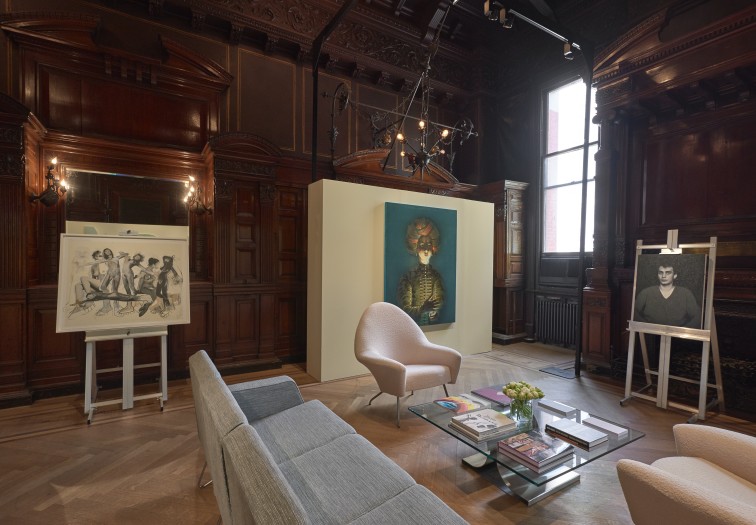TEFAF New York
Historic Room, Booth 211
Park Avenue Armory
643 Park Avenue, New York City
May 2 – 7, 2019
Self & Portrait
New York, NY… Luxembourg & Dayan is pleased to announce its inaugural participation in TEFAF New York with the project Self & Portrait. Featuring works by artists Ludwig Meidner, Otto Dix, Pablo Picasso, Rudolf Schlichter, Rudolf Stingel, Urs Fischer, Richard Prince and Piotr Uklański, the presentation focuses on the power of portraiture as a vehicle for both self-expression and a statement on the pervading values of an era. Throughout the history of art, commissioned portraits have typically served as a way of recording and, more often than not, flattering the sitter. By contrast the self-portrait has served as a platform for radical experimentation, formal and psychological. Both forms can be found in this grouping of works at TEFAF New York.
In two of the earliest works in the group, Otto Dix’s Bidnis Jankel Adler (Portrait of Jankel Adler) from 1926 and Rudolf Schlichter’s Karola Neher from 1929, the portraitists capture the unsentimental aesthetic values of the New Objectivity movement to which they both belonged. Dix renders the Polish artist and teacher Jankel Adler, who at the time was widely regarded for his abstracted depictions of figures and still lifes that he notably created by mixing oil paint with sand. In homage to the sitter, Dix experimented similarly in this canvas, the only known time he has done so. Schlichter, who was closely connected to communist circles, depicts the German actress and singer, herself a communist who died tragically in a labor camp in the Soviet Union.
Yet at other times, the tradition of portraiture takes a more stylistic approach, hinting at wider cultural themes. In Pablo Picasso’s Femme assise dans un fauteuil (1941), his muse and lover Dora Maar is almost violently abstracted and distorted. Through this fragmentation, one understands both Dora’s complex personality and the strain wrought by a war-torn Europe.
Made nearly a century after the earliest works in the presentation, Rudolf Stingel’s Untitled (Self-Portrait) from 2011 highlights how radical self-portraiture can be, even in its most understated rendering. Stingel once stated that “all work is autobiographical, so, that’s why I decided to just paint myself, instead of trying to come up with all kinds of wonderful ways to show myself.” Similarly, Urs Fischer’s Green Mountain from 2016, belonging to his series of “phantom paintings,” toys with the uncertainty brought by juxtaposing dichotomies. A ghostly, bisected image of the artist covers the canvas, yet Fischer adamantly rejects this as a self-portrait. Much like in Stingel’s self-portrait, the ideas of absence and presence are at play here.
Media Contact
Andrea Schwan, Andrea Schwan Inc. info@andreaschwan.com, +1 917 371 5023

